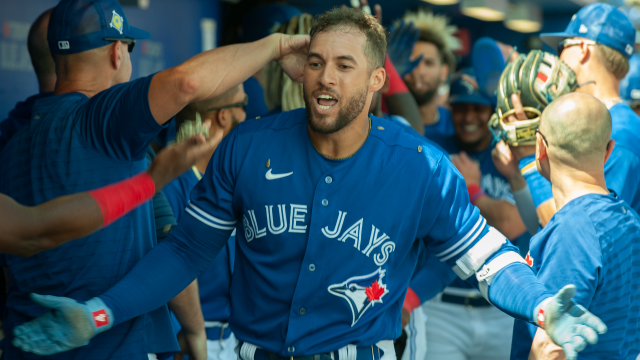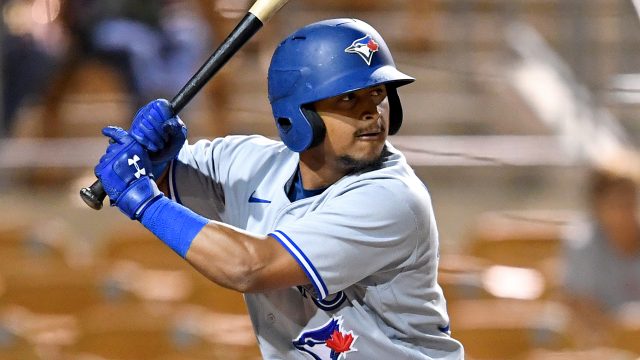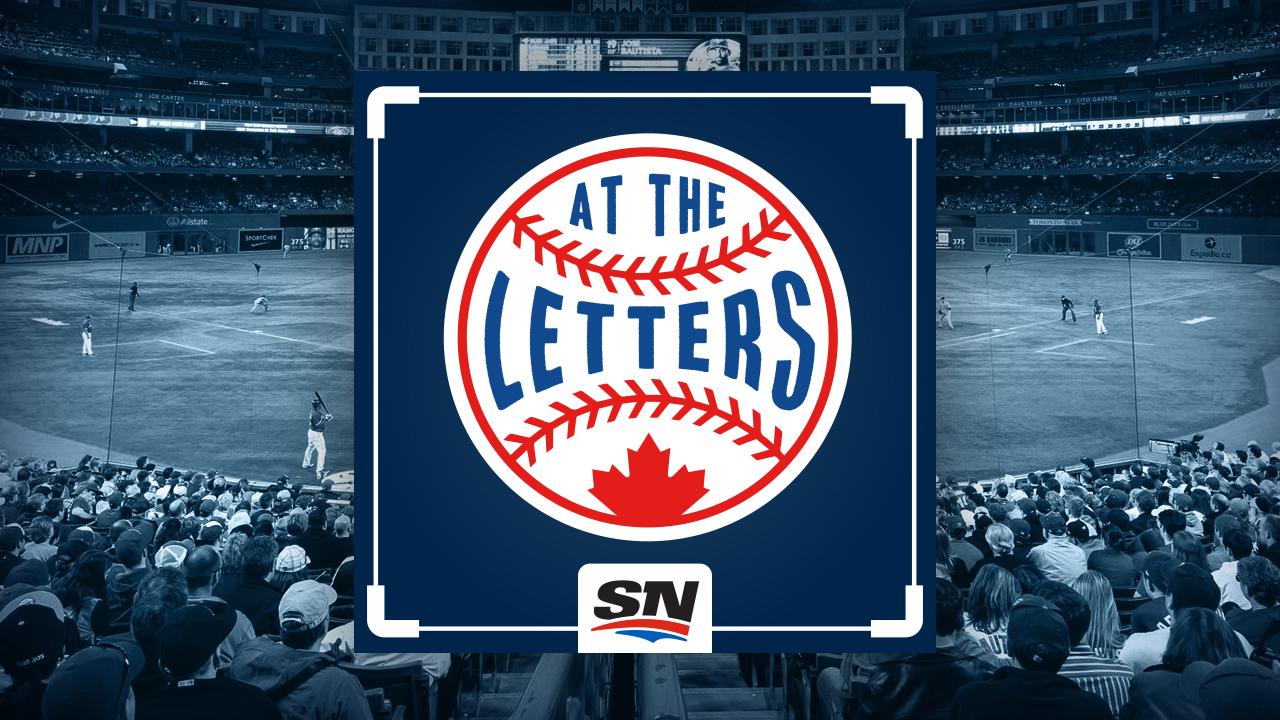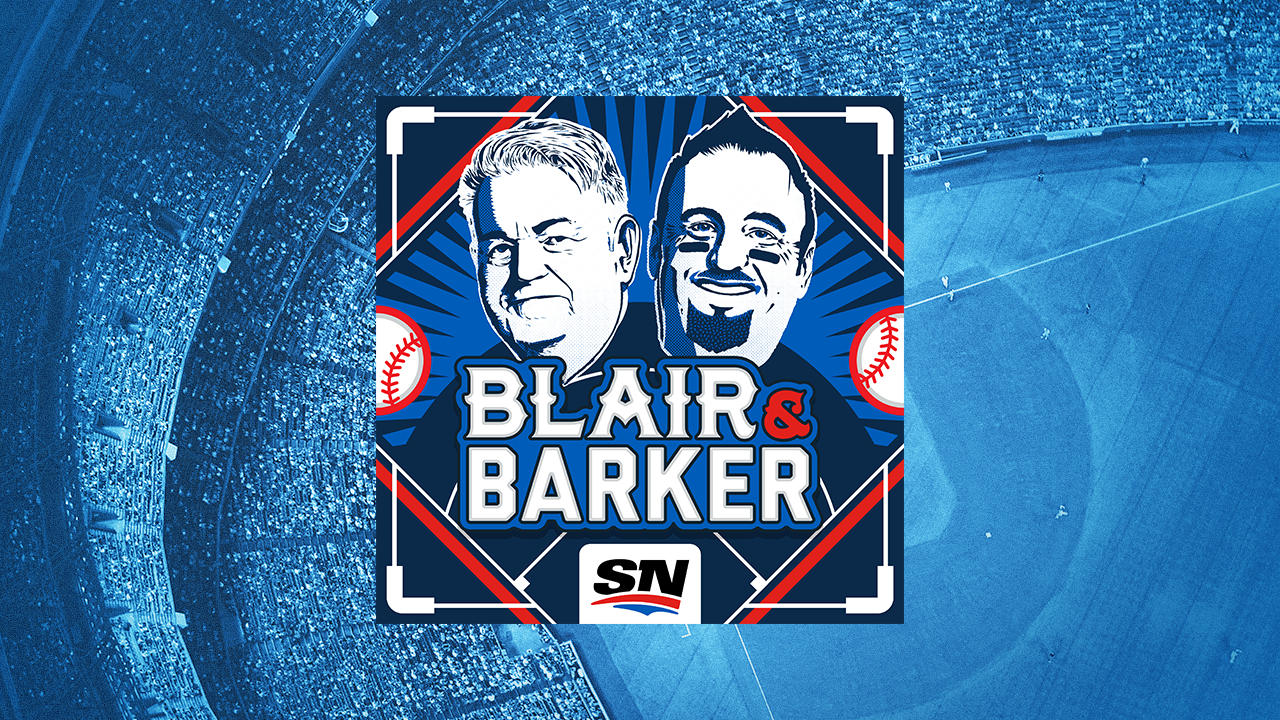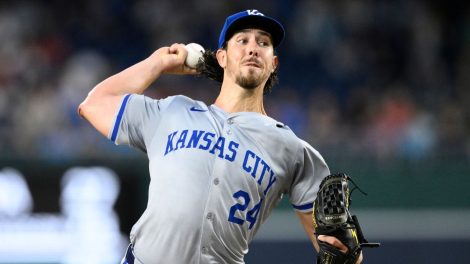TORONTO — Friday night at Rogers Centre, the Toronto Blue Jays will likely play in front of a sold out crowd — like, actually sold out, not pandemic-restricted capacity sold out — for the first time since March 29, 2018.
That was four opening day’s ago — a span of over 48 months. Or 1,470 days. At the time, Alejandro Kirk had made exactly three professional plate appearances. Alek Manoah was beginning his sophomore year of college. Yusei Kikuchi was pitching for the Seibu Lions. A 19-year-old Vladimir Guerrero Jr. had yet to play a game above high-A.
A lot’s changed since. The team on the field, absolutely. But also Rogers Centre itself, which has undergone extensive upgrades over the last several years, ahead of a much wider-scale renovation scheduled to begin next off-season.
When fans finally pack the building out again this weekend to welcome a World Series contender home, they’ll do so beneath MLB’s newest videoboard. Under a completely replaced lighting system. And while watching the game on a year-old playing surface, the most advanced and forgiving turf Rogers Centre has ever featured. Here’s a look at what’s new — and how it all came together.
The scoreboard
MLB’s oldest videoboard has been replaced with a gigantic, 8,076 sq. ft. display that measures the same width as the former one at its heart (258 feet) but stands considerably taller, adding 14 feet of height. It’s also 2.5 times the resolution of the former board — installed prior to the 2005 season — operating in 1080p HD.
You’ll notice a pair of new ribbons extending from either side of the main screen, wrapping 1,334 feet along the 300 level’s fascia and completing a nearly full circle around the lower bowl. More recently installed displays near the foul poles and embedded in the outfield walls have been replaced, too, allowing resolutions and colours to be consistent throughout the building.
“We took all the real estate we could possibly take without affecting the hotel rooms. It’s now about the 10th largest scoreboard in the league,” says Mike Christiansen, Rogers Centre’s director of technical production. “We have more real estate to let fans see more stats during the game, show them bigger replays, better camera shots. It’s more in tune with what they’ve seen in other ballparks.”
The process began with demolishing the former scoreboard, the wood supports that held it up, and Sightlines Restaurant, which ran around the outfield’s 300 level and was removed to allow for that 14-foot height increase. A new steel support structure was installed in its place, with some beams running between the hotel rooms that look out over George Springer’s shoulders.
Meanwhile, the new videoboard was being manufactured piece by piece in South Dakota by Daktronics, the electronics company behind some of North America’s largest sports stadium installations such as the 62,350 sq. ft. “halo” video board at Mercedes-Benz Stadium in Atlanta and MLB’s largest at Progressive Field in Cleveland.
Toronto’s new scoreboard was gradually delivered in 8×8 ft. pieces and hoisted up by crane to be installed in what amounted to a giant, electronic patchwork. And a mere 77 days after the first piece of the old scoreboard was removed, the new installation was fully assembled, including the vast amount of wiring and alignment work that needed to be completed behind the scenes.
Of course, installing the infrastructure was only the beginning. Rogers Centre’s team of designers and technicians have spent the months since producing entirely new suites of in-game presentations, a daunting task considering the videoboard’s sheer scale and unique layout.
What appears seamless to you on game day, with statistics flowing naturally around the stadium and graphics flying from one side of the board to the other, is the product of countless hours of design and live testing.
“You have to be pixel accurate,” Christiansen says. “So, until you know exactly where things are going to attach, and exactly how big things can be based on what the actual laser measurements are before it goes into manufacturing, you’re not exactly sure how to design for a canvas like this.”
But that also opens the door to a wide array of possibilities. You can expect to see far more statistics and information displayed on Rogers Centre’s videoboard this season; far clearer replays, too. Each of the more than 5,000 modules in the scoreboard runs 14 inches by 14 inches, and each individual pixel sits only 10 millimetres from the next one. On an extremely granular level, there’s a pixel for every centimetre of videoboard.
That makes it an extremely powerful tool for Christiansen and his team to play with and learn how to maximize throughout the season. If a little overwhelming at first.
“It’s a learning curve for us as technicians and operators because you’re working with a canvas that’s eight times the size of a regular television outlet,” Christiansen says.” So, you’re learning how to design for that, how to operate for that. Now you’re outputting to this odd custom shape that you won’t find anywhere else in the world. It’s unique to this building. Which means it needs to be designed for uniquely and operated uniquely, too.”
The lights
Underneath the videoboard, players will bask in a brand new lighting that will see Rogers Centre doing much more with much less. The building has replaced a 900-fixture HID set-up originally installed in 2011 with a 532-fixture LED one that will cost three times less annually in hydro consumption. That means the club is already enjoying return on investment from installing the new system, which will eventually pay for itself.
And discerning fans will notice the difference. While the old HID fixtures would bleed light around a general area of Rogers Centre’s turf, LED’s are much more directional and engineered to illuminate an exact point on the field. That reduces the amount of fixtures required to brighten the same amount of space while providing a discernible increase in quality of light.
“It’s definitely a cleaner light. When you’re out there on the field, it feels like daylight,” says Paul Zuschlag, Rogers Centre’s senior manager of facility maintenance. “That was the intent — to get a truer light on the field. Not brighter, just more consistent.”
A side effect of upgrading the directionality of the system, however, was a darkening of the seats surrounding the field of play. That led the Blue Jays to install new lighting in the stands themselves to keep those areas as bright as possible for fans coming and going from their seats. It was a particular concern in the 500 level, which was already underlit by the previous fixtures and has now had its lighting widely upgraded.
The lights themselves were provided by Musco, the same company the Blue Jays worked with when retrofitting Buffalo’s Sahlen Field to host MLB games over the last two seasons. The back-end infrastructure — in place since the stadium opened in 1989 — was also completely replaced, a massive undertaking that laid down 2.5 km of new fibre optics and 40,000 feet of copper wire that run through the entire building and feed back to Rogers Centre’s master control room on the 300 level behind home plate.
Meanwhile, each bullpen has been outfitted with its own independent, proprietary fixtures. And a fleet of 16 upward-pointing ball-trackers have been installed around the 200 level, illuminating Rogers Centre’s roof when its closed and about 400 feet of night sky when it’s open, allowing players to better see towering fly balls.
The system also includes 48 colour-changing RGBA (red, green, blue, amber) fixtures, making Rogers Centre one of only two MLB facilities — Miami’s LoanDepot Park is the other, having also installed it this off-season — with the ability to cascade millions of colours throughout its environment.
That means fans can expect dramatic pre- and in-game light shows, and event-specific displays such as a red-and-white theme for Canada Day or a rainbow one during Pride week. And whoever hits the Blue Jays first home run of the season this weekend will be greeted by splashy new celebration effects.
“I’m most excited, honestly, about the color-changing lights,” Zuschlag says. “It’s a really unique feature that no one else in MLB has had before. We’re really excited about it.”
It wouldn’t have been possible under the old, all-or-nothing system, which took 15 minutes for each bank of bulbs in the ballpark to cool down enough to be reactivated again. But now, Rogers Centre’s fixtures are all independently controlled and can be turned on and off instantaneously, which will vastly increase the amount of scenes Blue Jays gameday staff can produce.
It’ll allow for coordinating light displays with music emanating from an updated sound system installed in 2021. Eventually, everything will tie in to presentations on the new videoboard.
The lighting replacement process began in September and took until mid-March to be completed and commissioned with MLB. A team of 10 riggers, several of them double tied off in harnesses hanging from the roof, dropped each old HID fixture one by one and replaced it with a fresh LED. Removing the old bulbs wasn’t so bad — they weighed about half a pound. But the new LED ones? Those are 50-lb, enclosed fixtures. It took the team a week to install each bank of new lights.
But no one was more thrilled to see each new light installed than Zuschlag and his team, which was previously responsible for being hoisted all the way up to the roof and replacing old bulbs that had burned out. The new LEDs, thankfully, won’t need to be replaced any time soon.
“It’s a funny thing going up there — the nerves would come in waves,” says Zuschlag, who’s high angle trained and has replaced countless bulbs himself. “I was always really comfortable going up. And then there was that odd time where it hits you, like, ‘How did I get up here? How do I get down?’ So, it’s a nice change now knowing that we don’t have to do that anymore.”
The turf
This season will also be the Blue Jays first full campaign on Rogers Centre’s new turf, which was completely replaced last year. The biggest difference between the new surface and the old one — used for a half-dozen seasons prior — is that this one doesn’t go anywhere.
It’s glued to the concrete beneath it, creating a near seamless field of play. Older surfaces were pieced together from 15-foot wide strips of turf that were rolled up and removed between homestands before being re-laid when the Blue Jays returned from road trips.
That left inevitable seams and created inconsistencies that could lead to player missteps and balls bouncing in unusual directions. Now, when the Blue Jays hit the road, and concerts and events are held at Rogers Centre, the turf stays put.
Previous Rogers Centre surfaces also didn’t allow the club to lay a shock pad underneath, which the new field does. It’s essentially a three-quarter-inch thick polyethylene foam pad that absorbs energy, reducing the amount balls bounce and the impact on player’s bodies as they run across it.
“If you were to see it, you’d be surprised that it’s used on a major league field because it doesn’t look like anything spectacular,” says Tom Farrell, the Blue Jays director of field operations. “But it’s the product of a lot of engineering and studying. There are multiple different types of shock pads. And through a lot of testing, we found this one provides the best performance.”
Farrell’s team can also now add a sand mix to the rubber pellets scattered around on top of the turf, which provides additional cushion, absorbs more impact, and increases stability. With the old surface, all that sand would have made the strips of turf too heavy to roll up.
The initial sand-rubber mix was laid down with a giant hopper last year and groomed into the turf, similar to how top dressing would be added to a natural grass field. Every day throughout the 2021 season, Farrell’s team performed touch ups around the field based on feedback from players, both with a top spreader and a special walk-behind spreader for the perimeter of the surface where it touches infield dirt, which is always a problem area. That process will continue daily throughout the 2022 season.
“The feedback from coaches and players has been very positive,” Farrell says. “The one thing we don’t want is for them to wait until the problem becomes a real serious issue. If we can address it beforehand and make sure they have the best playing conditions — that’s what we’re working towards.”
Of course, it’s still turf. Balls will bounce higher than they do on grass. Players will experience more stress in their knees and backs than they would on a natural surface. But the quality of Toronto’s turf has advanced leaps and bounds over the years and is as close to playing true as it’s ever been. And for Blue Jays outfielders familiar with Rogers Centre’s intricacies, it can be a slight competitive advantage.
“The unique thing about baseball is almost every field is different. There’s different grass species, there’s different clay structures. There’s no set parameter on what types of clays you use. There’s different vendors. Different teams use different products. They all play a little bit differently.”
For instance, Rogers Centre uses five different blends of material to form its infield dirt. Areas that need to be softer and absorb a lot of water, like the runways between the bases, is 60 per cent sand with a mixture of clay of silt. Areas that need to be firmer and more durable, such as the batter’s boxes and the landing area on the pitcher’s mound, get a higher-content, grey clay.
The rest of the mound gets a red clay that still has a higher content than between the bases but is easier to work with than the grey clay. And the catcher’s area gets clay blend that’s a bit firmer than between the bases but softer than the mound, designed to be easier on the catcher’s knees while withstanding the beating of nine innings.
It may only look like simple dirt and turf from your seats. But there’s a world of thought, testing, and work that went into what lies beneath your favourite Blue Jays’ feet.
“We’ve just found what we like and what works over years of trial and error,” Farrell says. “We did a lot of research prior to selecting this field and installing it. We do torsion tests and all this stuff to see the impact on the lower extremities of the players. And, based on the testing, this turf is a lot better than what we’ve had.”
Editor’s Note: One of the 30 MLB teams, the Toronto Blue Jays, is owned by Rogers Communications Inc., which also owns Sportsnet.


